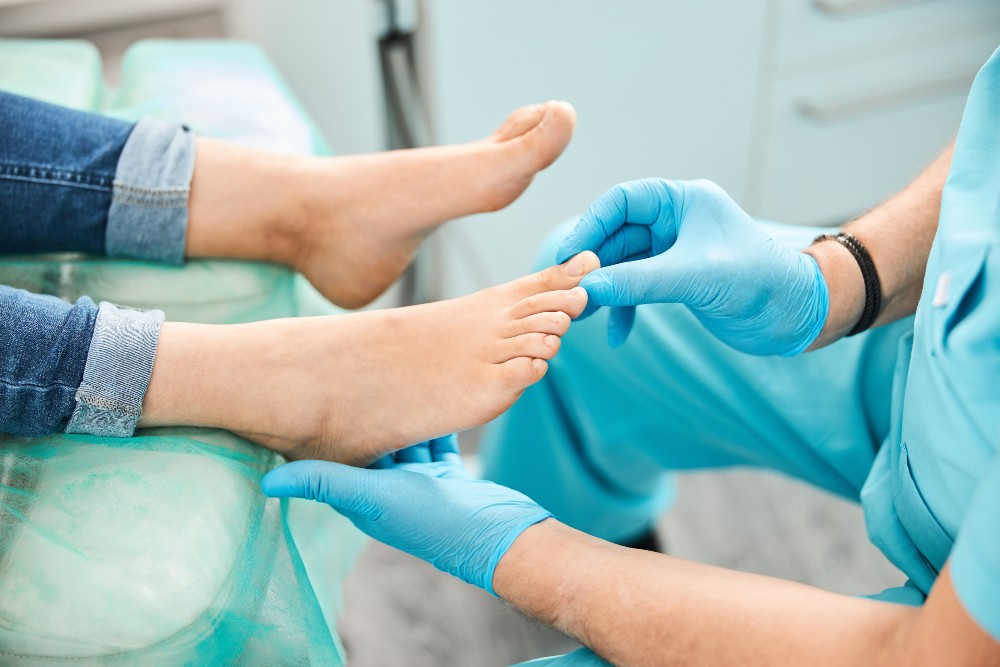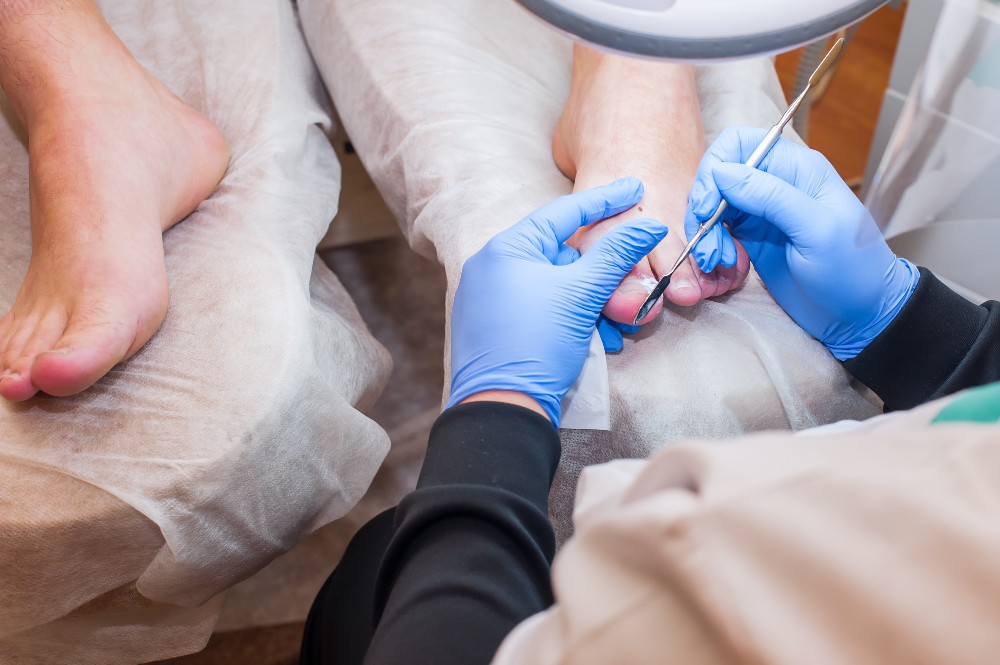Does Ingrown Toenail Surgery Hurt?
Ingrown toenails are one of the most common podiatric conditions we treat. For both children and adults, surgical interventions are often necessary to remove the toenail that’s causing you pain.
The biggest question our patients have when we tell them we have to remove a part of the toenail is, “Will it hurt?”
Good news. Our ingrown toenail procedure is fast, relatively painless, and takes less than 15 minutes.
What Causes Ingrown Toenails?
- Trimming your toenails too short, or trimming in a curved line.
- Wearing shoes that are too tight or too small for your feet.
- Certain injuries to your toenail.
- Not trimming enough, which can cause them to break off irregularly.
- Participating in certain sports that impact the toes, such as soccer, football, kickboxing, and ballet.
- Genetics leading to curved nails.
How to Know if You Have an Ingrown Toenail
You might not realize that you have an ingrown toenail at first. Symptoms can be mild, but they will worsen as the nail grows longer and presses further into the surrounding skin.
Symptoms of ingrown toenails include:
- Pain and tenderness around your toe.
- Inflamed skin and a feeling of warmth around the toe.
- Swelling and redness with the inability to bear weight on the toe.
- Infection of the toe, which may include pus or discharge.
How Does a Doctor Diagnose an Ingrown Toenail?
One of our podiatrists will diagnose your ingrown toenail just by looking at your foot. They will also ask you some questions about your symptoms. Then they will recommend a treatment plan based on the severity of your condition.
Mild cases of ingrown toenails can often be treated using home remedies, and resolve on their own within a few weeks.
Moderate to severe cases require a doctor’s intervention to treat both the ingrown toenail and any infection.
Treatment Options for Ingrown Toenails
For mild cases, your doctors will recommend soaking your feet in warm water and Epson salts. This softens the skin and makes it easier for the toenail to break through and grow normally.
With softened skin, you can also use a cotton ball to gently move the skin away from the edge of the toenail.
Taking over-the-counter non-steroidal anti-inflammatory drugs like ibuprofen can help you manage any pain.
Topical ointments, like Neosporin, can also help prevent infection. If your doctor notices any signs of infection, or if your symptoms worsen, then they will likely suggest an in-office surgical procedure.
What Causes Ingrown Toenails to Hurt?
Ingrown toenails are painful because the hard nail is pressing against the soft skin on your foot. As the nail grows into the skin, rather than straight, it can lead to swelling, pain, and redness.
In some cases, people can treat ingrown toenails on their own. But people with severe cases, or who have diabetes, should seek a podiatrist’s care.
We recommend ingrown toenail surgery when patients have inflamed skin, signs of infection, and moderate to severe pain. Usually, the doctor removes the ingrown nail border that is causing discomfort.
Less painful than the pain of the ingrown toenail, nail removal procedures are fast and can be done right in our offices.
What Can I Expect from Ingrown Toenail Surgery?
There will be a shot of local anesthetic to your toe. So you won’t feel anything around the surgical site for the entire procedure. The shot itself only takes seconds. There is a mild burning sensation that goes away quickly.
The entire procedure takes around 10-15 minutes, and you won’t feel any pain during the procedure. Afterward, any discomfort you feel afterward will be much less than the pain you experience from an ingrown toenail.
Post Surgery Care
After your ingrown toenail surgery, we will apply a bandage to dress the wound. You may experience mild swelling and aches at the surgical site, but we will give you instructions to manage any symptoms and discomfort. Residual discomfort should start to resolve within a few days of treatment.
As your toe begins to heal, avoid injuring it or stubbing it on any object. You should also avoid strenuous exercise or playing sports for some time. Your podiatrist will tell you exactly how long to wait, as well as what physical activities are okay during recovery.
If you’re feeling better before you’re given medical clearance, be sure to reach out and ask whether it’s possible to resume full activity. It’s always better to wait until your podiatrist gives you the okay than to resume your normal activities and possibly reinjure your toe.
Most people are able to wear their regular shoes and return to work or school the day after surgery. Afterward, you may have some pain during recovery, but it will be much more manageable than the pain from the ingrown toenail itself.
Contact Midwest Podiatry Centers to Book Your Appointment
If you are experiencing any pain from an ingrown toenail, don’t suffer for another step. Reach out to the friendly staff at Midwest Podiatry today to schedule a visit with one of our foot doctors. Please contact us today by filling out our online form or you can also call us at (612) 788-8778. We are always happy to meet new patients, and help them get on the road to recovery.


